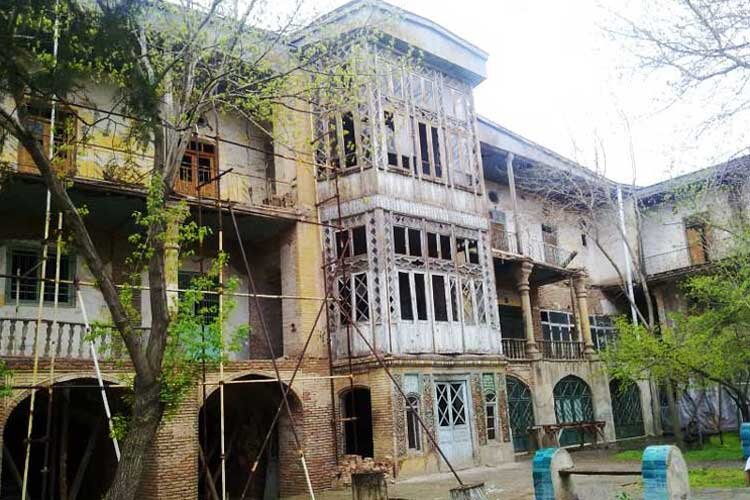TEHRAN – Buttressing measures have been conducted on the historical Qazvin Grand Hotel, which was established in 1922 in the west-central Iranian city. The monument that covers about 3,000 square meters in area is now ready for the next phase of restoration.
“With the completion of a phase that reinforced the building of Qazvin Grand Hotel building, the restoration project will enter a new phase in mid-Mordad (Early August),” CHTN quoted CEO of the Iran Cultural Heritage and Tourism Investment Group Co. (SEMEGA) as saying on Monday.
Over the past years, the Ministry of Cultural Heritage, Tourism and Handicrafts has conducted a series of emergency restoration work on the hotel. However, a new phase of restoration was completed at the end of [the month] Ordibehesht (May 20), Esfandyar Heydaripour added.
Known as Iran’s first “European-style” hotel, the dilapidated structure was put out to tender last year but attracted little interest. However, SEMEGA placed a bid during the second tender in February and won. SEMEGA’s reputation for restoring old buildings without financial difficulty was integral to the fund accepting their bid.
The hotel’s location in the historical texture of Qazvin (152 kilometers northeast of Tehran) has been cited as one of the reasons behind the lack of interest among investors, as any possible damage to the historical texture during restoration could cost investors a small fortune.
It is one of the oldest hotels in the country, covering about 3,000 square meters. The three-story building enjoys unique architectural features, such as Corinthian order column capitals, wooden ceiling, elegant stuccos, and brickwork.
Inscribed on the National Heritage List in 2004, the hotel is the site of a historically significant event: It was in this hotel that Reza Shah, the founder of the Pahlavi dynasty, plotted the coup d’etat that ended the Qajar rule in Iran in the early 20th century.
Qazvin was once the capital of the Persian Empire under Safavids from 1548-98. It is a major tourist destination with a wonderfully restored caravanserai-turned-arts precinct, some quirky museums, and a handful of decent eating options. For most travelers, Qazvin is also primarily the staging point for excursions to the famous Castles of the Assassins and trekking in the sensational Alamut Valley.
TAGS


No comments:
Post a Comment